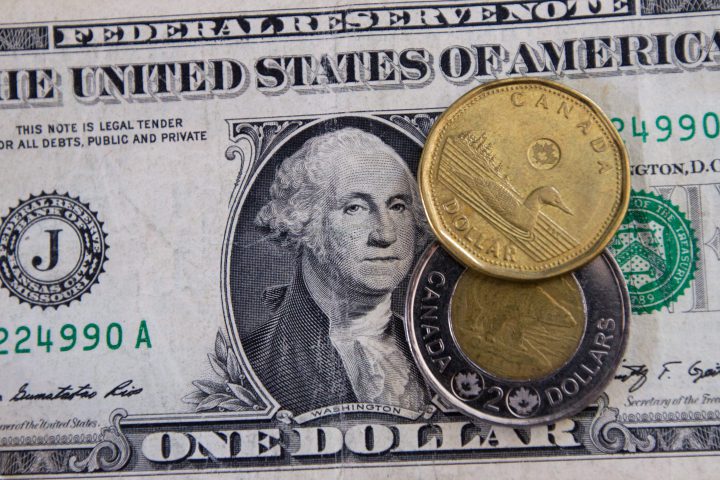Statistics Canada released the country’s latest jobs numbers Friday, revealing the lowest unemployment rate since the recession.

The rate fell 0.2 percentage points to 6.3 per cent for the first time since October 2008, while the number of people searching for jobs declined. According to StatsCan, 10,900 net new jobs were created in July.
On the same day, the organization also released trade numbers which weren’t very encouraging for Canada.
READ MORE: Canada’s unemployment rate drops to 6.3%, lowest since October 2008
But what exactly do falling unemployment numbers and a climbing trade deficit mean for the Canadian economy? Market analyst at CMC Markets Colin Cieszynski helps break it down.
Unemployment numbers down. Are they as good as they seem?
Canada has had “very nice steady job growth” recently, Cieszynski said, noting that 45,300 jobs were created in June and 54,500 in May.
“You can’t keep up 40 to 50 thousand jobs forever,” he explained, saying the most impressive part of this month’s job numbers is the growth in full-time positions.
WATCH: Canada’s unemployment hits the lowest level since 2008

In the past 12 months, 354,000 full-time positions have been created in the country.
Employment in Ontario and Manitoba rose by 26,000 and 4,800, respectively. Cieszynski noted this was likely part due to an increase in manufacturing.
“The number of people working in manufacturing rose by 14,000 in July, the third notable gain in five months,” read the StatsCan findings.
READ MORE: Canada’s economy records blockbuster growth, raising chance of another rate hike
The report wasn’t positive for the entire country. Alberta lost 14,000 jobs, Newfoundland and Labrador shed 5,300 positions and Prince Edward Island dropped by 1,000.
TD economist Brian DePratto was slightly less optimistic in his take on the numbers.
“Although hourly wage growth ticked up again, it remains stubbornly weak,” a TD report stated. It also added that the drop in unemployment rate was “led by fewer Canadians looking for work.”
Bad news: Canada’s trade deficit grows
An increase announced in Canada’s trade deficit made news of encouraging job numbers bittersweet, Cieszynski said.
- Posters promoting ‘Steal From Loblaws Day’ are circulating. How did we get here?
- Video shows Ontario police sharing Trudeau’s location with protester, investigation launched
- Canadian food banks are on the brink: ‘This is not a sustainable situation’
- Solar eclipse eye damage: More than 160 cases reported in Ontario, Quebec
Canada’s trade deficit grew to $3.6 billion in June from $1.6 billion in May, Statistics Canada reported Friday. That means the demand for Canadian exports is lower than what the country wants to import.
READ MORE: Unemployment inches up in Saskatchewan during July
“This sharp decrease was mainly due to lower exports of unwrought gold and energy products,” StatsCan explained.
Exports to the United States were down 4.5 per cent, narrowing Canada’s trade surplus to $2.2 billion from $3.5 billion in May. It’s the smallest surplus Canada has had with the U.S. since June 2016.
Why is the loonie up? Will it stay that way?
An overall positive job report could have given the loonie a bump, but it was muffled by the trade report, Cieszynski explained.
But the Canadian dollar has been soaring lately, sitting close to 79 cents U.S. for several days. Cieszynski added that its 10-cent increase since May is a “huge move.”
WATCH: Canadian economy gains 45,000 jobs in June

While the loonie usually moves in the same direction as oil prices, which have fallen, it’s the Bank of Canada’s recent interest rate hike that’s behind the increase, he explained.
Cieszynski noted the U.S. dollar has been falling, which has contributed to a relatively higher loonie.
Expect another interest-rate hike from the Bank of Canada
Cieszynski added that he expects the Bank of Canada will bump the interest rate once again before the end of the year, to make it 1 per cent once again. The hike would help the loonie stay at least around 75 cents U.S. for the following months.
If the Bank of Canada does this, it means they’re confident the economy is “strong” enough to handle the increase, Cieszynski said.
READ MORE: At 80 US cents, the loonie is up 10% since May — who wins and who loses?
How is the economy doing overall?
“The Canadian economy is doing very, very well,” according to Cieszynski.
He says Canada has adjusted to lower energy prices, which means the economy is more stable overall. It’s also benefiting from a bump in the U.S. economy’s performance.
While oil prices aren’t going to increase dramatically, they’re expected to remain fairly steady at about $45-55 per barrel.
“Unless there was some kind of big surprise, it looks like the Canadian economy will continue to grow steadily for the next couple months,” Cieszynski said.
— With files from The Canadian Press




Comments